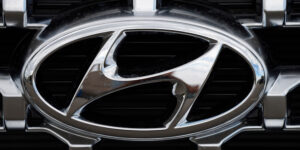The chief U.S. auto safety regulator defended a voluntary agreement with carmakers to add automatic braking systems, saying that making the change mandatory would take too much time.
Under the terms of the agreement, major automakers representing 99 percent of U.S. sales will equip cars and trucks with automatic emergency braking systems designed to detect and prevent crashes without driver action. The technology will be a standard feature on all new vehicles by the end of 2022.
“Too often safety efforts have been limited to what the government could force industry to do,” Mark Rosekind, head of the National Highway Transportation Safety Administration, said. “This is a new model for safety. Instead of a fight over setting a floor for safety, this asks companies to aim higher.”
The voluntary agreement will bring the technology to market two years sooner than if they tried to do it by regulation, Rosekind said at an event held at the Federal Highway Administration test track in McLean, Virginia. In the two years it would have taken to get a regulation fully implemented, the technology will prevent 28,000 crashes and 12,000 injuries, NHTSA estimates.
‘Avoiding Regulation’
One of the harshest critics of Thursday’s announcement, consumer advocate Joan Claybrook, preceded Rosekind as head of NHTSA in the 1970s. Relying on voluntary agreements undermines NHTSA’s credibility, discourages the agency’s independent research and may lead Congress to reduce funding, she said.
“These companies can cheat,” Claybrook said. “For them, the best part is they’re avoiding regulation.”
Advocates who are asking for NHTSA to only govern by regulation are tied to “models of the past,” said Deborah Hersman, president and CEO of the National Safety Council.
“The reality is the automakers are rolling out the technology so quickly there’s no way regulators can keep up. We’ve got to embrace the technology and push it forward,” said Hersman, who until 2014 served as chairman of the National Transportation Safety Board.
The advanced braking systems will be standard on virtually all light-duty cars and trucks with a gross vehicle weight of as much as 8,500 pounds (3,856 kilograms) no later than Sept. 1, 2022. It will be standard on virtually all trucks with a gross vehicle weight as much as 10,000 pounds (4,536 kilograms) no later than Sept. 1, 2025.
Automakers making the commitment are General Motors Co., Ford Motor Co., Toyota Motor Corp., Tesla Motors Inc., BMW AG, Daimler AG, Mazda Motor Corp., Volvo Cars, Volkswagen AG, FCA US LLC, Honda Motor Co., Hyundai Motor Co., Jaguar Land Rover Automotive Plc., Kia Motors Corp., Maserati Spa, Mitsubishi Motors Corp., Nissan Motor Co. and Subaru Motors Co. VW brands Audi and Porsche were also included in the agreement.
Consumer Reports
Consumer Reports, the non-profit product testing organization, will assist in monitoring automaker progress toward meeting the commitment. Jake Fisher, the group’s director of automotive testing, said Thursday consumer surveys show many magazine subscribers have experience automatic braking in the real world, and they’re crediting it with saving lives.
“The technology has proven itself,” Fisher said. “People who experience it are sold. They become advocates.”
U.S. Transportation Department regulators and the insurance industry have been in talks since last year on voluntary commitments that would cover most new models. Automatic emergency braking systems use radar or other sensors to detect an imminent crash and, if needed, engage the brakes to avoid or minimize the impact of a rear-end collision.
The systems are designed to respond quicker than human reflexes in a crash situation. Human error is responsible for 94 percent of all traffic crashes, according to NHTSA.
Jack Salzwedel, chairman of the Insurance Institute for Highway Safety and CEO of American Family Mutual Insurance, said the adoption of technology could lead to discounted policies.
“Deploying AEB on a wide scale will allow us to further evaluate the technology’s effectiveness and its impact on insurance losses, so that more insurers can explore offering discounts or lower premiums to consumers who choose AEB-equipped vehicles,” he said in a statement.
Automakers won’t be subject to any kind of penalty if they don’t live up to the agreement, the way they would if they didn’t comply with a regulation, Rosekind said.
Market pressure on the industry will ensure compliance, he said, citing the agency’s public crash-test ratings and IIHS tests. Once automakers start to compete with each other for better scores, they don’t go back, he said.
Still, if the agency isn’t satisfied with the industry’s moves, regulation is still a possibility.
“We haven’t given anything up” Rosekind said. “If this doesn’t get done as fast as they say, we can always do rulemaking.”




















 Unpacking a Consumer Intervenor’s Novel Idea
Unpacking a Consumer Intervenor’s Novel Idea  Rebuilding Negotiation Talent: Why This Skill Is Missing and How to Fix It
Rebuilding Negotiation Talent: Why This Skill Is Missing and How to Fix It  Acrisure to Buy MGA Vave From Canopius
Acrisure to Buy MGA Vave From Canopius  McKinsey Plots Thousands of Job Cuts in Slowdown for Consulting Industry
McKinsey Plots Thousands of Job Cuts in Slowdown for Consulting Industry 














